This article contains affiliate links. We may earn a small commission if you purchase via these links.
Do you think monoculars are cheap?
You could spend anywhere between $150 to $5000 on one.
Given this wide price range, I limited my search to only the best night vision monoculars at varied price points.
I looked for digital and passive technologies, budget and pricey monoculars, and features like video recording or mil-spec PVS-14 civilian units.
The Top Night Vision Monoculars

SiOnyx Aurora Pro
Versatile Uses
WiFi compatible
150 yrd human detection range
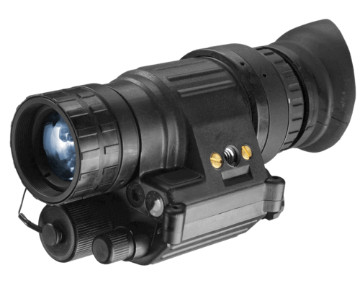
ATN PVS14-3
Auto-gated/thin-filmed
Long battery life
Included accessories
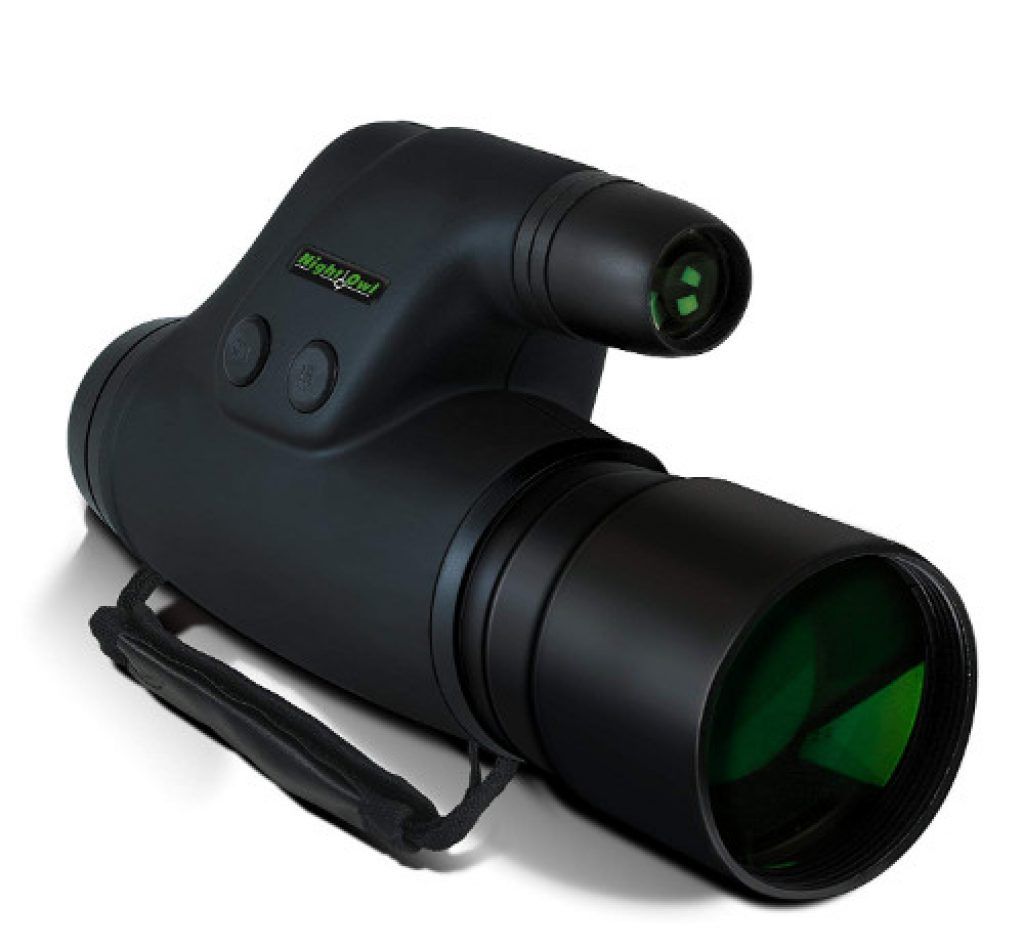
Night Owl NOXM50
Close focus distance
5x power & 50mm objective lens
Long battery life
Why Trust Us?
After hundreds of hours of hand-testing monoculars in the field and at the range, and thousands more hours researching and writing about them, we feel we earn the title of experts when it comes to optics!
We purchase as many of the optics for our tests as possible, and run them through their paces to make sure they will perform at the range and in the field.
Our combined decades of experience from camping and outdoor activities, to big game hunting and competitions has been integral in putting together this round-up of the best night vision monoculars.
Get the inside scoop on how we test optics here.
Why choose a monocular over night vision goggles, binoculars, or a night vision rifle scope?
They're compact and easy to use.
As a general rule, monoculars can often be mounted to tripods, head sets and helmets, and possibly to a rail on an AR-15 with mounting hardware and adapters.

You can use monoculars as a recreational tool for airsoft, night hiking, and wildlife observation. You can also purchase professional models that are good enough for search and rescue, hunting, law enforcement, SHTF, home defense, and surveillance.
Because of how costly night vision gear can get, I set a criteria to find affordable monoculars that will fit anyone's budget.
But, I didn't want to ignore the elite monoculars that will serve for professional applications or hunting.
So, I included budget, digital, passive, and expensive night vision monoculars.
As is obvious, my list is quite diverse. There's no way you won't find one that doesn't fit your needs or your budget!
| IMAGE | PRODUCT | DETAILS | |
|---|---|---|---|
 | SiOnyx Aurora Pro |
| CHECK PRICE |
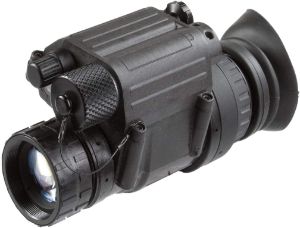 | AGM PVS-14 NL1 |
| CHECK PRICE |
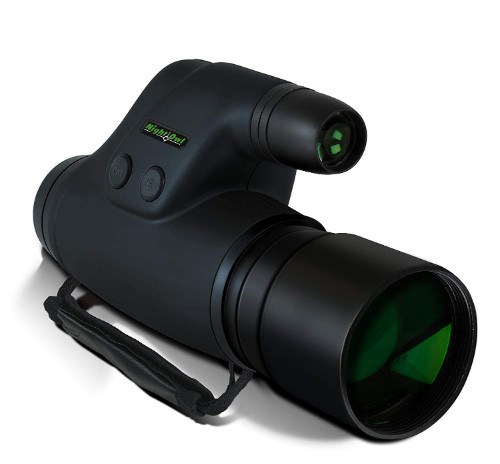 | Night Owl NOXM502 |
| CHECK PRICE |
 | AGM Wolf-14 NL2 |
| CHECK PRICE |
 | ATN PVS14-3 |
| CHECK PRICE |
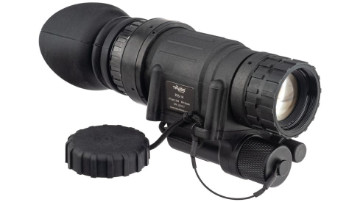 | TRYBE PVS-14 |
| CHECK PRICE |
 | Bushnell Equinox Z2 |
| CHECK PRICE |
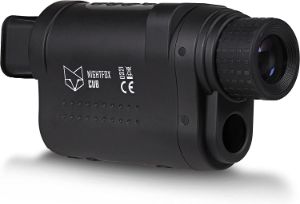 | NightFox Cub |
| CHECK PRICE |
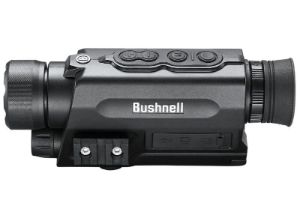 | Bushnell X650 |
| CHECK PRICE |
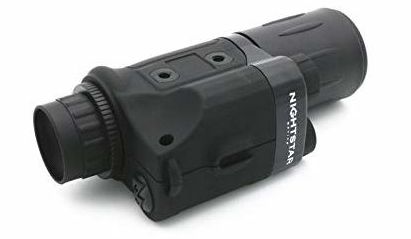 | NightStar 2x42 |
| CHECK PRICE |
10 Best Night Vision Monoculars for 2024
1. SiOnyx Aurora Pro - Best Digital
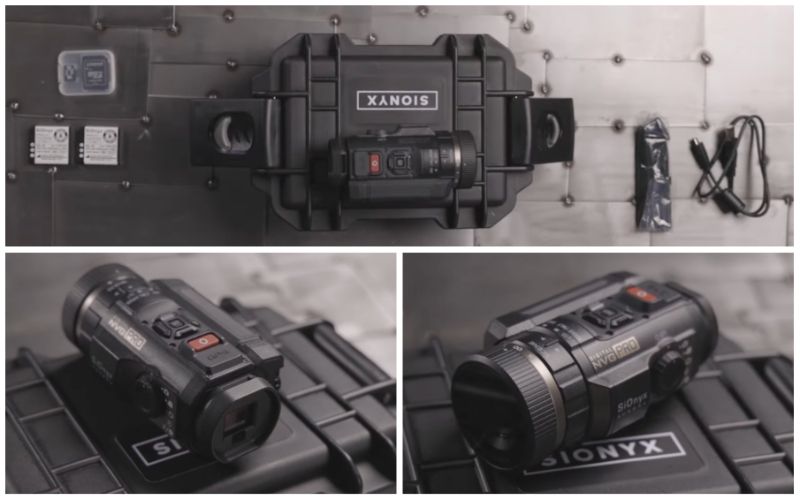
The SiOnyx Aurora Pro is the flagship model for the Aurora series, and given how impressed I was with the Aurora, I have big expectations for the Pro. Though pricey for digital, it’s one of the best night vision devices for its versatility and performance.
Pros:
- Price
- Digital NVN
- WiFi
- Versatile uses
- Water-resistant
Cons:
- Battery life
It’s easy to see that the Aurora Pro is feature packed. With WiFi, you can stream wirelessly. Video record your nighttime excursions. Run GPS, compass, and accelerometer features, and you can zoom in and out with digital power from 1-3x.
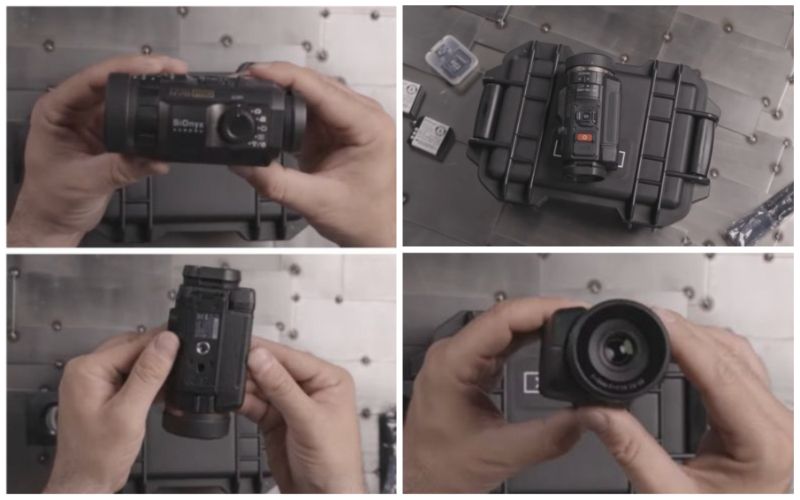
For the money, I think the human-sized detection range of 150 yards (approx.) is more than reasonable. The resolution and contrast are excellent enough for multiple applications from observation to hunting.
As a monocular, it’s well-suited to handheld use, but I like that it has a tripod receiver for tripod and helmet mounting. It can also sit on a rail mount like the SiOnyx weapon mount (that I have and continue to use for various monoculars). However, I’d bet that it’s likely only rated for use up to a .223 cal. though.
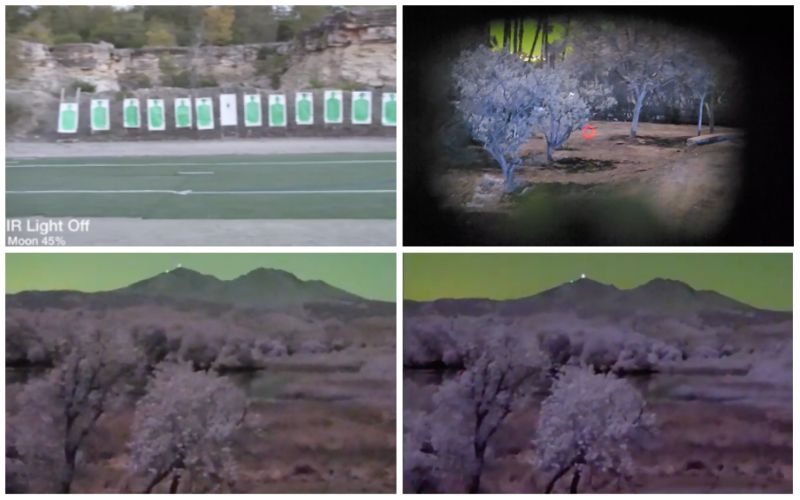
The downside is that it’s digital, so battery runtime isn’t the best. In fact, it’s on the bad side of the spectrum lasting for only two hours. If you continuously run the other features, you’ll likely get just over an hour.
That’s not great, so I will make it a point to mention that it comes with two camera batteries, so at least you can double up on battery runtime. For its capabilities and performance, I think the Aurora Pro will be money well spent.
2. AGM PVS-14 NL1 – Best Budget PVS-14 Under $2500
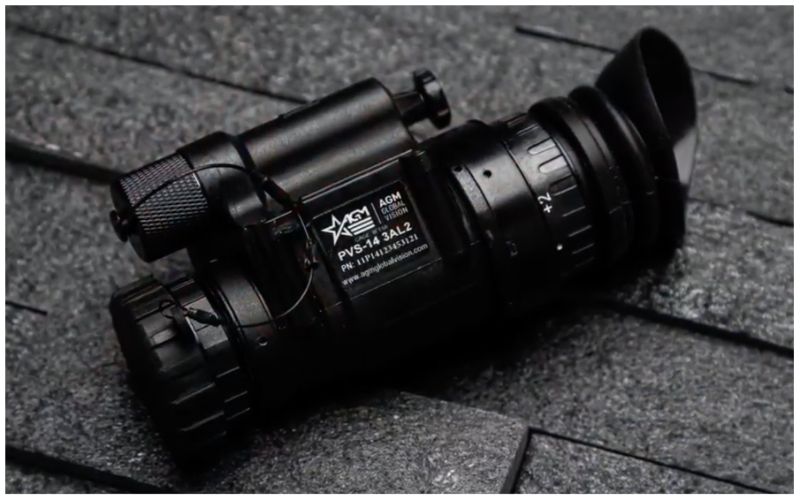
There’s not a lot of Gen 2 devices for under $2000, and when you do find it, you may want to spend a little more for an upgrade. That would lead you to the AGM PVS-14 NL1. It’s a Gen 2 PVS-14 with AGM’s “level 1” IIT – the best of what they offer.
Pros:
- Price
- Manual gain
- Long battery life
- Lightweight/compact
- Accessories included
Cons:
- Quality control issues
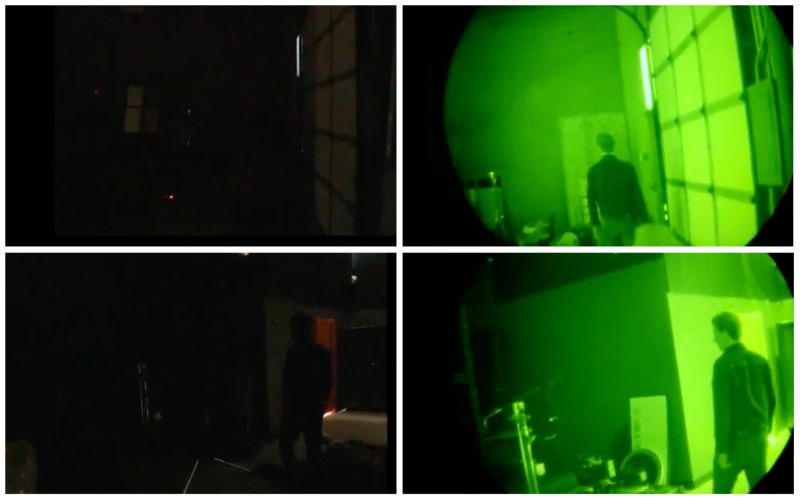
Pay attention to the IIT spec that you’re purchasing. Some Gen 3 models have had minor light spots or flecks that AGM has addressed appropriately, so an inspection is required as soon as you receive it. It’s worth noting that the PVS-14 comes with a limited 3-year warranty.
As far as performance, the Gen 2 NL1 PVS-14 is worth the money if you want “more.” It has 51-64 lp/mm resolution with a 50-degree FOV. It takes 1x AA battery to power the PVS-14 for up to 50 hours.
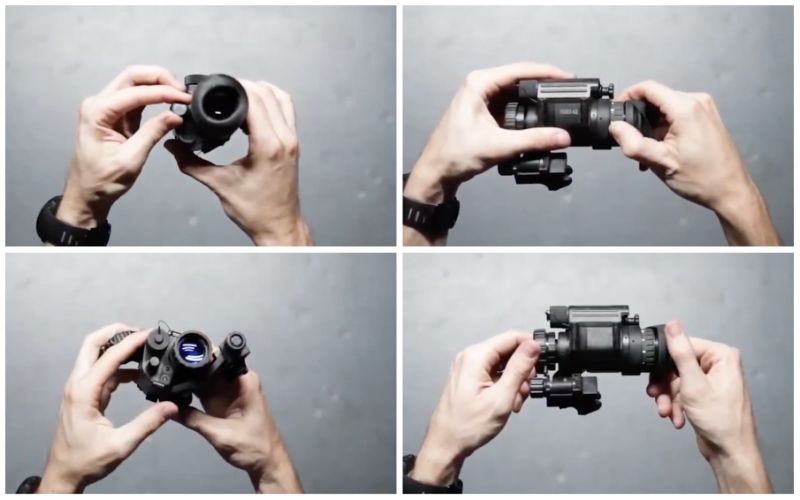
What I really like is its compact and lightweight dimensions. It’s 4.5 x 2.5 x 2.7” in size and weighs 12.4 oz. That’s pretty close to mil-spec and perfect for head mounting. Speaking of which, the PVS comes with a head mount assembly, j-arm (albeit a plastic one), soft carry case, and a bunch of smaller accessories to compliment the monocular.
I’d say for the money, the PVS-14 offers a lot considering it’s a level 1 tube with greater resolution, manual gain, wider FOV, longer battery runtime, and it comes with mounting gear and hardware. This is the epitome of spending little bit more to get better.
3. Night Owl NOXM50 - Best GEN 1

The NOXM50 by Night Owl Optics is a worthy investment that won't have you breaking into a sweat over the budget. It's a real passive night vision monocular with a Gen 1 tube. It doesn't get cheaper than this for real night vision.
Pros:
- Gen 1
- 5x power
- 50 mm objective lens
- Long-lasting battery life
- Close focus distance
Cons:
- Focus issues
Real glass optics are inside the NOXM50. The glass will go a long way when darkness comes versus junk options with plastic lenses. The glass lens is 50mm (pretty big for night vision) and the tube has 35 lp/mm resolution. The unit has a built-in IR illuminator that will likely be needed to maximize range.
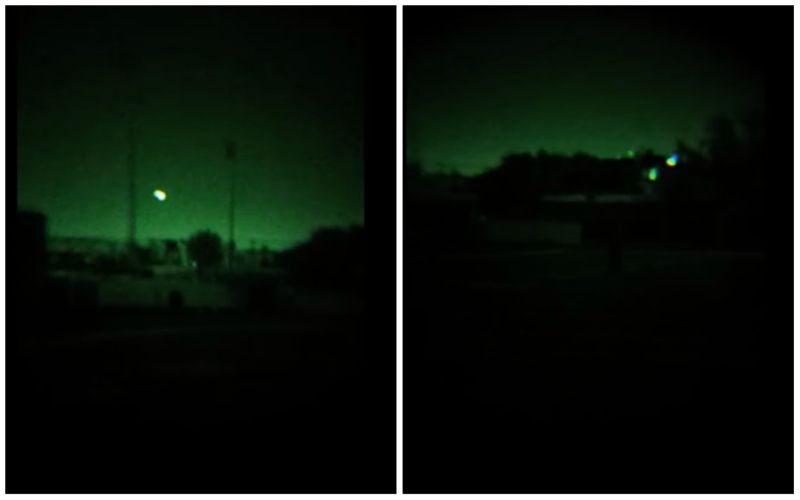
Even better, I think the Night Owl handheld unit feels like a solid product. It has a rubberized, soft-touch finish that I really like and an impact-resistant molded thermoplastic lens housing to protect it.
Disappointing news is that you don't get a 3V 123 Lithium battery in the box. At least you'll get anywhere between 45-100 hours depending on how heavy-handed you are with using the built-in IR illuminator.
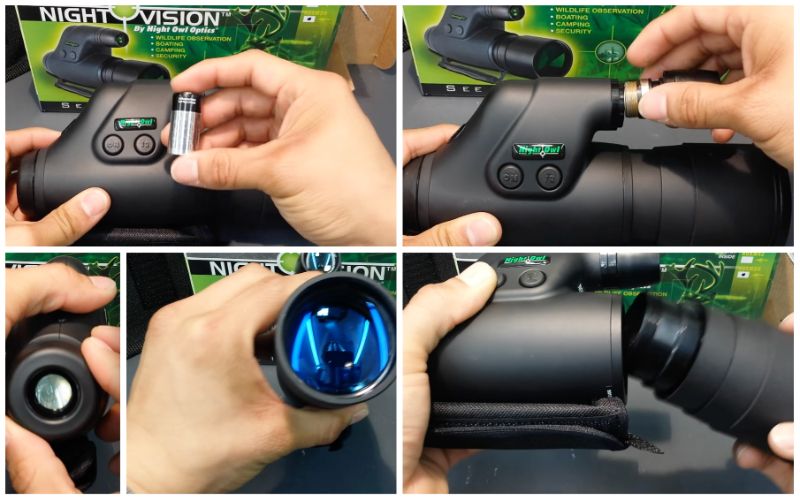
Focus issues are a typical downside with economical monoculars regardless of brand, and it's a common drawback here.
Be vendor-specific since warranty information on this product is sparse and conditions are extensive. In other words, the NOXM50 is an excellent buy, but I'd make sure it's up to par when you get it.
4. AGM Wolf-14 NL2 - Best GEN 2

It’s only been recently that you can find Gen 2 night vision for under $2500, and the AGM Wolf-14 NL2 is one of the most affordable passive monoculars available. As a “level 2” IIT, it’s the second-best of what AGM has to offer in Gen 2 tubes.
Pros:
- Gen 2
- 1x magnification
- Built-in IR
- Battery life
- Helmet mountable
Cons:
- No mounting adapters included
So, there’s a bit of confusion. Though the Wolf-14 can be helmet mounted for hands-free use, it does not come with any mounting or head gear equipment, and from what I’ve seen, it’s not compatible with PVS-14 hardware. AGM has their own mounting hardware but the costs for the optional gear is on you.
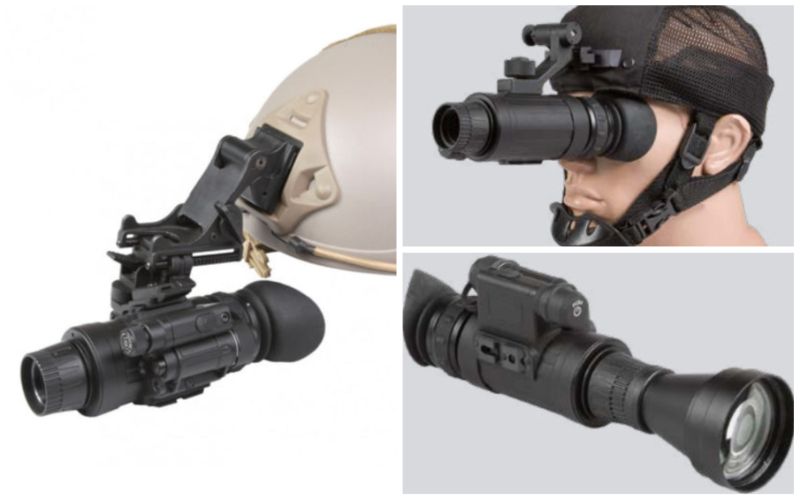
The NL2 model has 1x magnification, 45-57 lp/mm resolution, 27mm objective lens, and a 40-degree FOV. I like that this model is available in either green or white phosphor, and it has a dual power source. So, you can use either an AA battery or a CR123A battery to run the monocular for up to 40 hours.
It’s a little long at 6.1”, but it’s lightweight at 1 lb. Not much is included with the Wolf-14 save for a soft carry case, battery, and battery adapter. Of course, a detailed user manual is also included.
What I think is most noteworthy is the price point. The Wolf-14 NL2 is a value buy given it’s entry-level Gen 2. It’s well-priced and gives many the option to enter the serious world of passive night vision without spending more than $2K.
5. ATN PVS14-3 - Best GEN 3
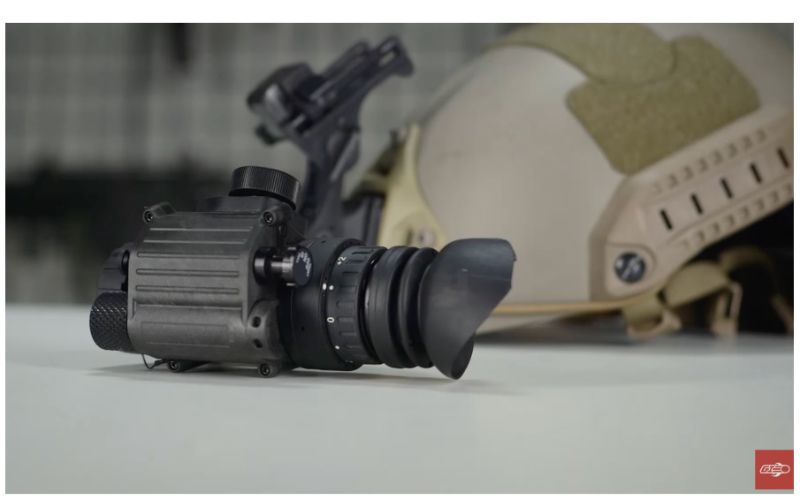
The PVS14 series starts with the Gen 3 model - PVS14-3. Though it’s made after the U.S. Military design, it’s not a mil-spec grade unit. The plastic/composite body will be the dead giveaway. However, for its Gen 3 quality, not a soul has a complaint about its performance.
Pros:
- Gen 3
- Auto-gated/thin-filmed
- Long battery life
- Ultra-lightweight/compact
- Accessories included
Cons:
- Price
- Plastic housing

The PVS-14 is a famous NVM, and I think ATN does their version well. However, it’s still a monocular close to $4K in price, and it does have less-than-military-rugged housing. But it’s water-resistant and covered under warranty. For the costs, I wouldn’t recommend being aggressive with this unit anyway.
I like the auto-gated and thin-filmed IIT. It has a 22 signal to noise ratio and a 1600 figure of merit value. So, it’s about standard for what you should expect out of a Gen 3. Following those expectations, the PVS14-3 has 64-72 lp/mm resolution, a 27mm objective lens, and a 40-degree FOV.
What stands out to me is its ultra-light weight and compact size. ATN kept their version identical to mil-spec in this regard.
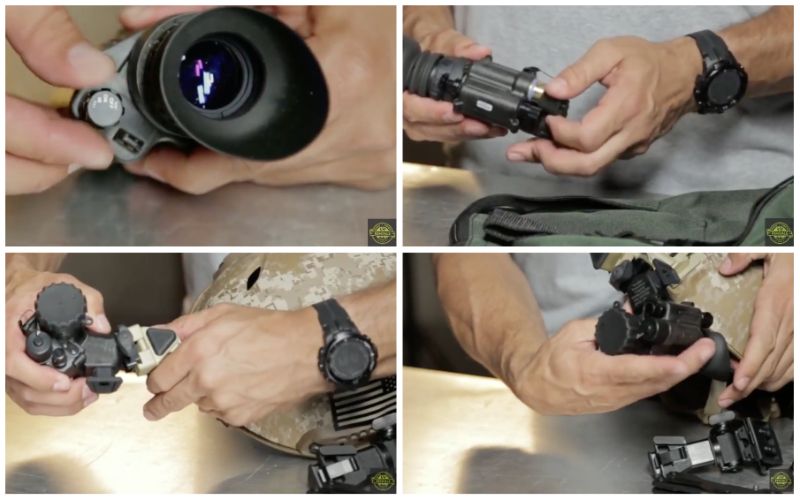
The PVS14-3 takes only one AA to power it for 50 hours. It comes with a head mount assembly and adapter to mount it; however, it’s been said it’s not very comfortable – a helmet would be the better option.
If you’re looking for Gen 3 night vision, this is the standard that will more than do for hunting, surveillance, general observation, and some duty/patrol work. It’s expensive, but this ain’t no toy – it’s a legit PVS-14.
6. TRYBE PVS-14 - Best GEN 4 & Best White Phosphor

In this case, Gen 4 equates to a filmless IIT just as this Trybe PVS-14 has. You can get the Trybe in green phosphor for a cheaper price, but the white phosphor is the most popular version. Occasionally, you can find it for less than $4000, but expect to spend up to $5K for a hand-selected model.
Pros:
- Gen 3
- White phosphor
- Autogated/filmless
- Fog & waterproof
- Versatile uses
Cons:
- Price
The TRYBE PVS-14 is pretty mil-spec from its MIL-STD-810-compliant ruggedness to its nitrogen-purged and waterproof housing. This PVS-14 has a Gen 3 filmless IIT and comes with either an Elbit or L3 IIT.
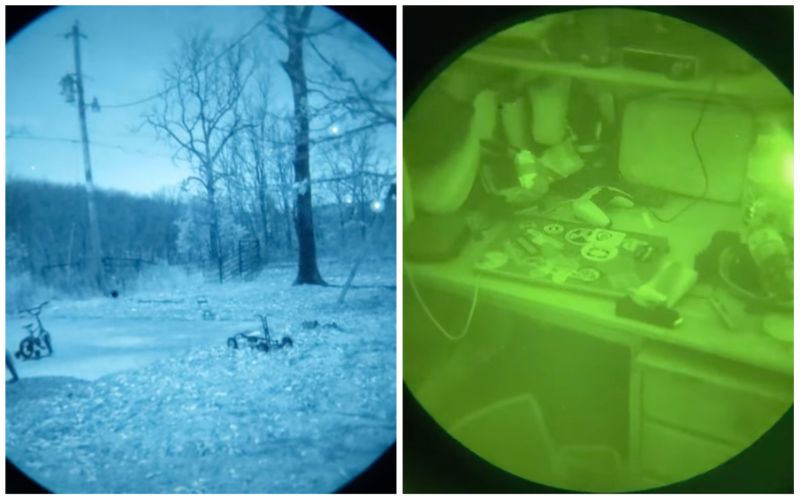
You can go with a standard tube or a hand-select model to guarantee resolution from 64-72 lp/mm for standard and 72-81 lp/mm for a hand-select. You may also get figure of merit values ranging from 1728-2371 and signal-to-noise ratios of 27-31 or more.
This is why the price for these NVMs are so expensive. I would still recommend looking for blemishes especially if you picked a hand-selected tube – it can happen. The Trybe PVS is covered under a Standard Limited Warranty that runs for 2 years from the date of purchase.
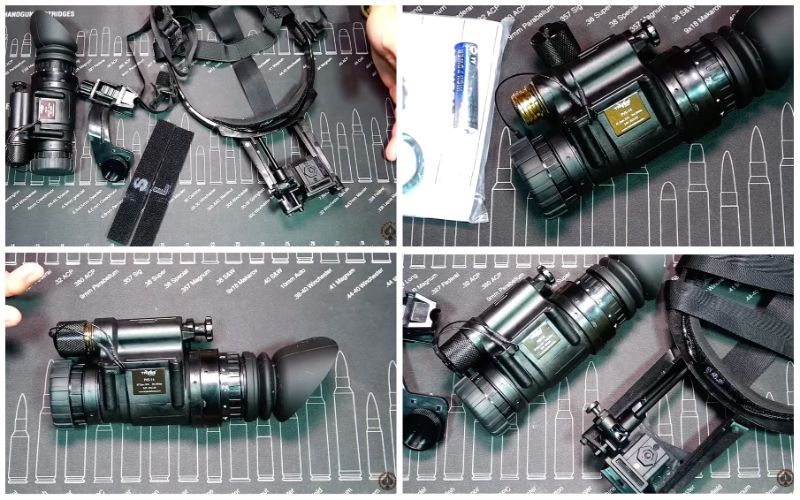
I like that it can be used in multiple applications making it a versatile optic. It can be used as a handheld, head and helmet mounted, attached to a camera, and weapon mounted. It also looks like a head harness and j-arm are included in the soft carry case that it comes with.
Like many PVS-14s, it has a 40-degree FOV, 1x magnification, and it runs off an AA battery. The accessories might not be the best, but it gets you hands-free out of the box. If you have a helmet, which I recommend you should get one if you don’t, then it’s irrelevant.
Even though this is a Gen 3 PVS-14, the money comes in with the white phosphor and filmless Gen 3 tube. It’s pricey, but it’s right in line with competing alternatives.
7. Bushnell Equinox Z2 - Best Magnified Monocular
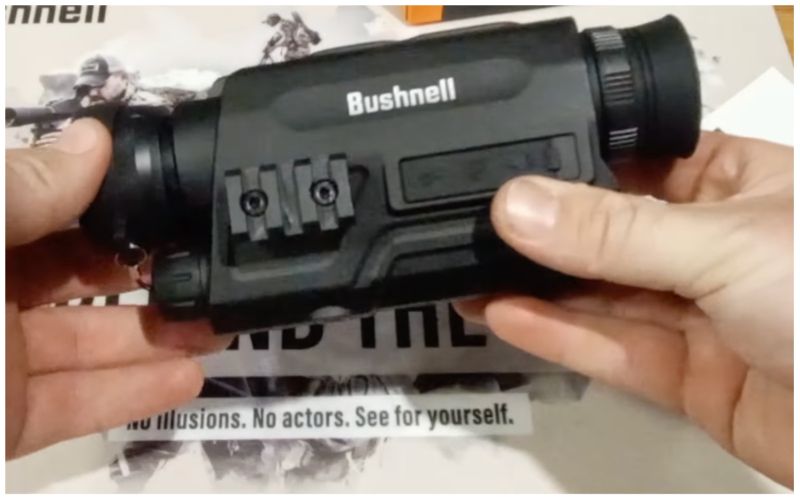
The Equinox Z2 is the 6x50 unit that does everything big and in style - that is, digital style. This monocular is a digital night vision unit that will be your undercover pal day or night.
Pros:
- Price
- Digital technology
- 6x magnification
- 50 mm objective lens
- WiFi-enabled
Cons:
- Heavy
- Battery runtime
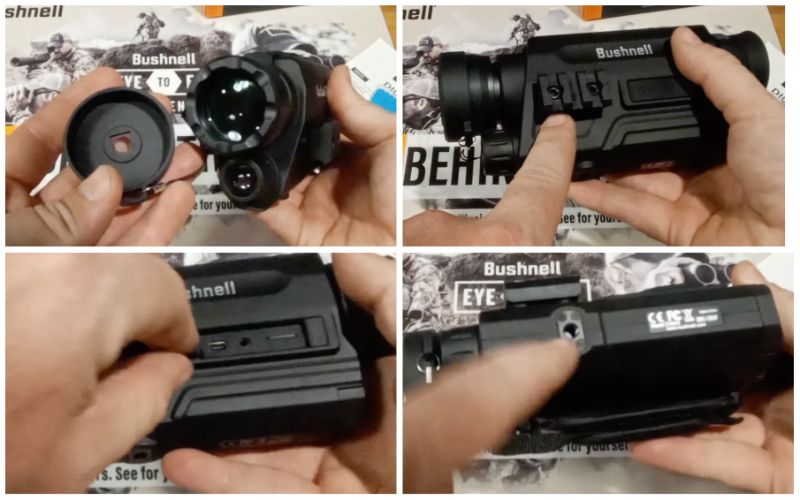
The Z2 monocular is the largest unit in the series at 2.4 x 4.1 x 8.1". This fact is obvious with its 6x fixed power and the huge 50 mm objective lens that lets in as much ambient light as possible.
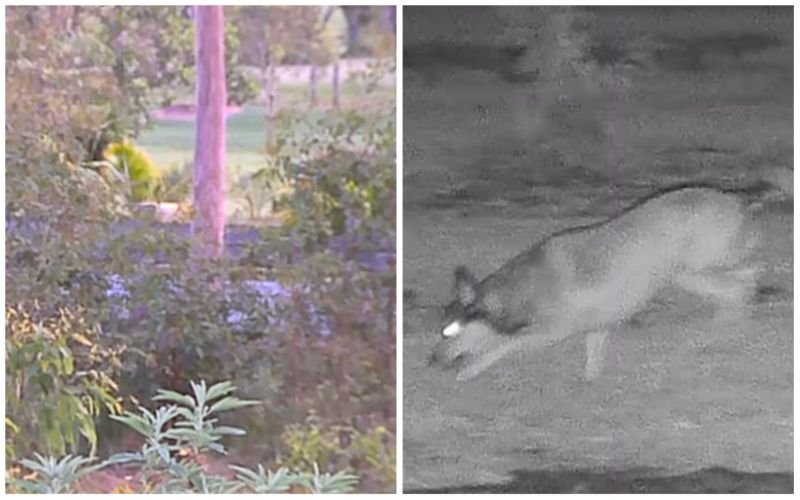
But, as a digital monocular, the Equinox Z2 also doubles as a daytime device for those who want dual purpose benefits from their night vision optic.
You can video record with 1080p resolution which is good for an entry-level digital monocular. I also like that you can get to about 300 yards in detection range. It has a built-in IR illuminator with an 850nm wavelength.


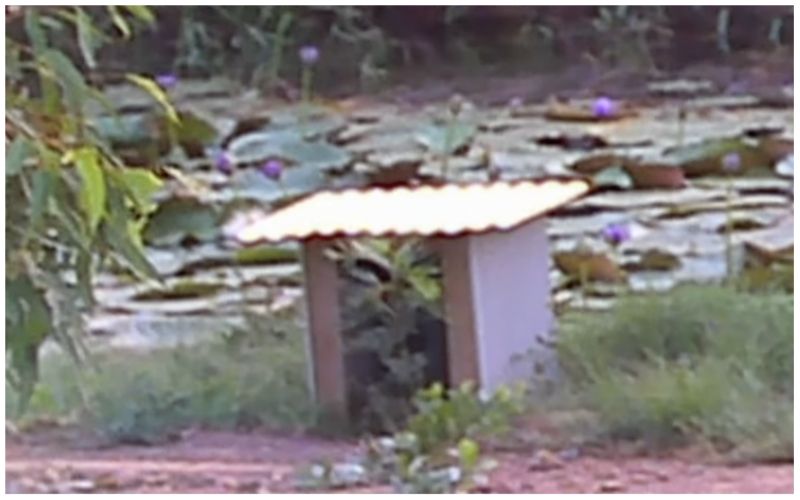
The not so great things about it is that it needs 4x AA batteries and you'll only get about 2 hours of continuous runtime. This may be its only legitimate drawback, so I'd recommend keeping rechargeable spares on you.
I really like that the Equinox Z2 is covered under the Ironclad Warranty. But I recommend paying attention because it's a 5-year electro-optics warranty that applies to the NV monocular. That's at least 3-4 years longer than most other manufacturers!
8. NightFox Cub - Best Under $150 (Best Budget)
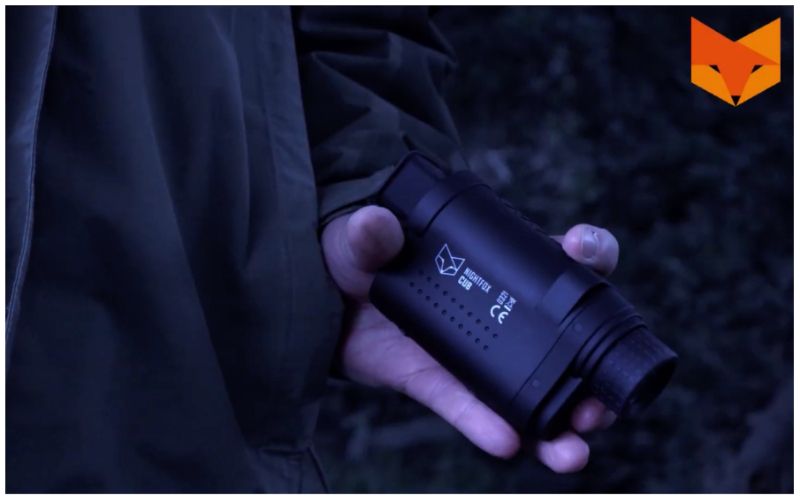
NightFox has made a name for themselves for their digital night vision products. One of their newer offerings is the Cub. It’s a digital night vision monocular that’s pocket-sized, has great range (for the money), and good battery life (for a digital NVD). It might not be under $100, but it is still one of the best budget night vision monoculars you will find.
Pros:
- Price
- Digital
- Video recording
- 3-4 hours battery life
- Pocket-sized
Cons:
- Long eye relief
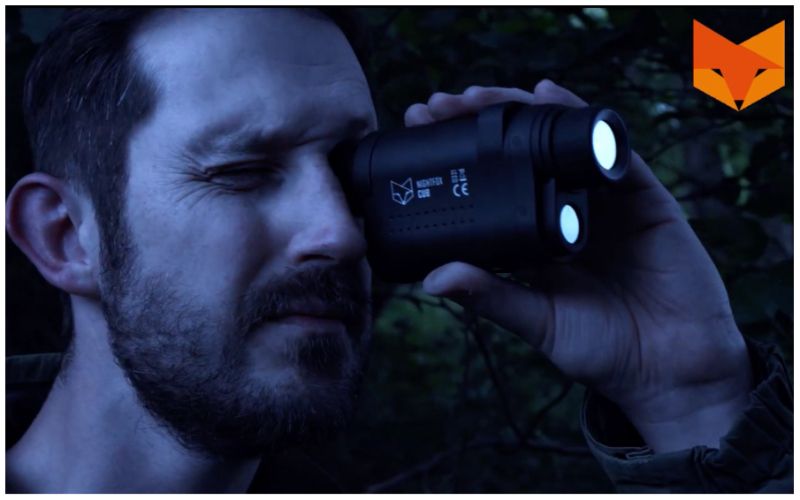
Apparently, for some, the NightFox Cub requires that you view the eyepiece from a distance and not up against it like you would with a monocular that has an eyecup. I suspect this could be due to visual acuity issues because it's not supposed to be this way.
If this does happen, it can be difficult to focus on when using it as a handheld, but it’s worth noting that it has a tripod receiver. My suggestion? Mount it and get comfortable.
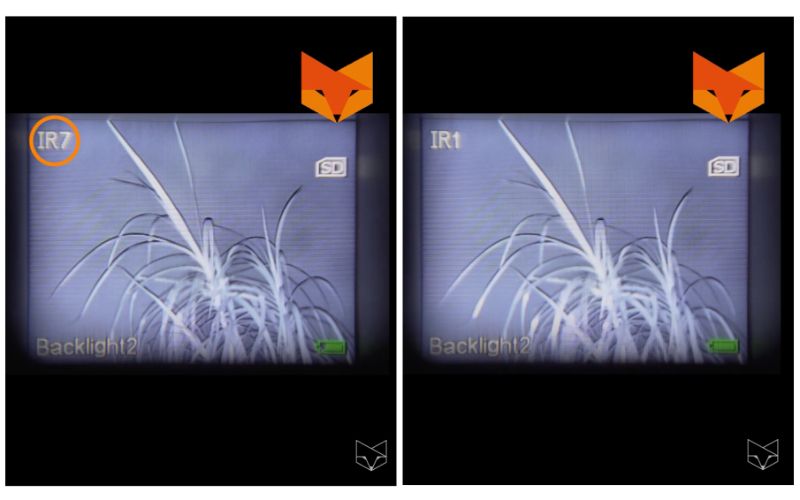
The Cub has 3x optical magnification with 2x digital zoom. Like most other digital devices, the FOV is 10 degrees – so not great, but still competitive and better than 6-7 degrees.
Though its max detection range is 165 yards, it’s likely to be less than that, so I’d assume in the 100-150-yard range – which is better than no night vision at all! I like that it’s compact at 5 x 1.8 x 2.9” in size and weighs only 0.5 lb.
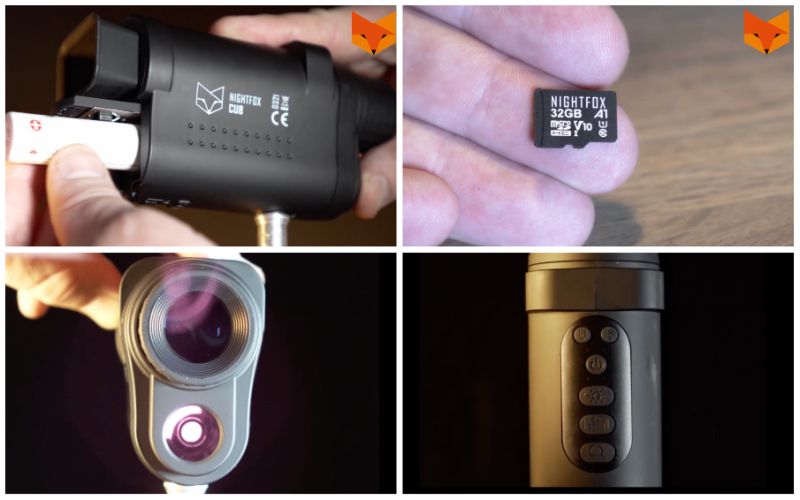
It requires an 18650 lithium-ion rechargeable battery, but at least it has a 3–4-hour (nighttime) runtime that is better than alternatives that have only 1-2 hours of continuous operation.
The Cub is an entry-level and budget monocular, but it puts digital night vision in your pocket at a price that doesn’t break the bank. Even better news – it’s covered with an 18-month warranty.
9. Bushnell X650 - Best Under $200
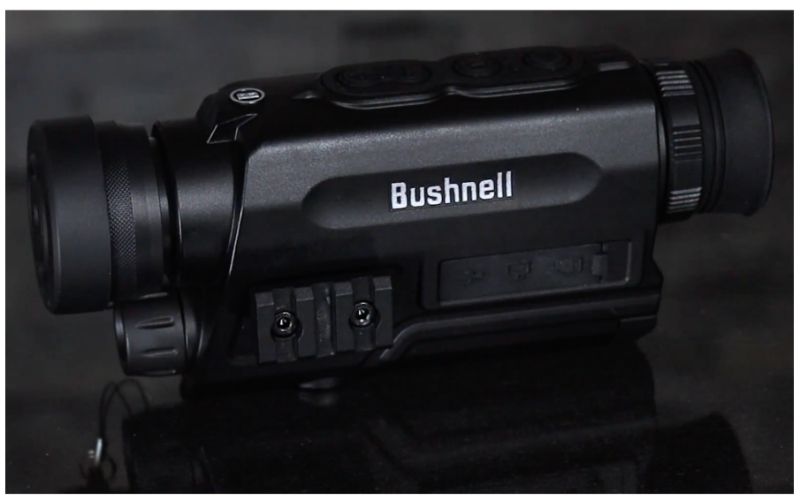
The Bushnell X650 (model #EX650) is a new night vision line from Bushnell that compliments their famous Equinox Z2 series. It’s magnified, has a long detection range, and video records. It’s simple, easy to use, and affordable.
Pros:
- Price
- Digital
- Magnified
- Tripod mountable
- Video recording
Cons:
- Learning curve
The user interface has been said to be difficult to work with in the fact that there’s a learning curve to menu settings and button operation. Bushnell doesn’t include hardcopy user manuals in the package (they haven’t for a long time), so you must go online to figure out what does what.
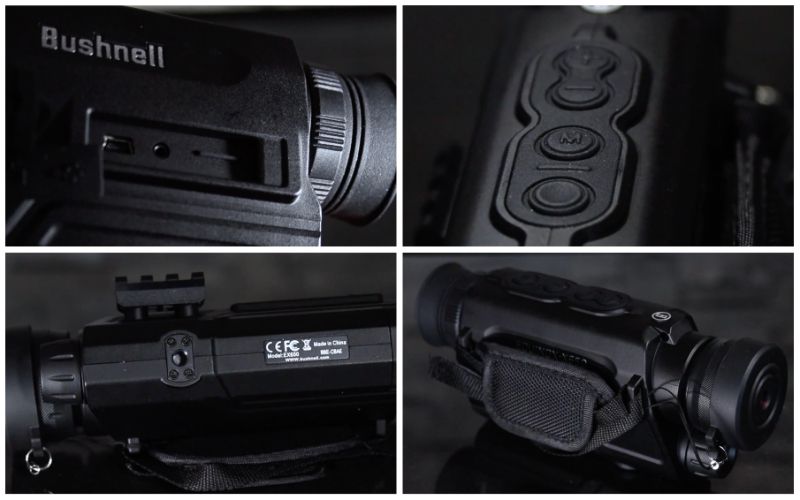
Once you have everything going, you should know that the camera resolution isn’t the best when video recording, but it works, comes with a micro-SD card, and has a video output port. So, I’d say that this budget digital NVM is good for recreational applications.
Its strengths lie in the fact that it has a 200-yard (approx.) detection range, digital 3x zoom, and a tripod receiver for mounting.
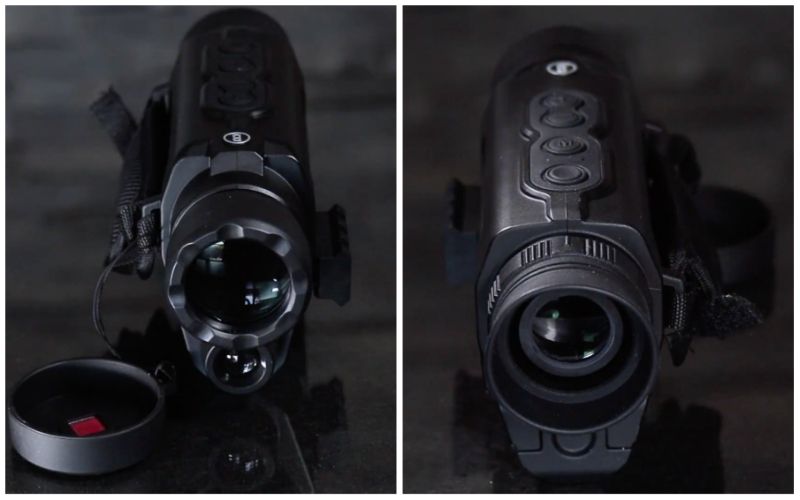
It’s a power hog since it requires 3x AA batteries (which are included!) but it’s a digital device after all, and I’d expect around 1-2 hours of continuous operation from it. Likely, this is a realistic runtime especially since you’ll need to run the IR illuminator on it.
Other notes to consider - naturally, the FOV will be narrow due to the 5x magnification. If you need diopter correction, you might bottom out without achieving crisp clarity, so I’d advise keeping your glasses on if you can manage it!
The best thing the X650 has going for it is that it works, it has range, and it’s under $200!
10. NightStar 2x42 – Best for Airsoft
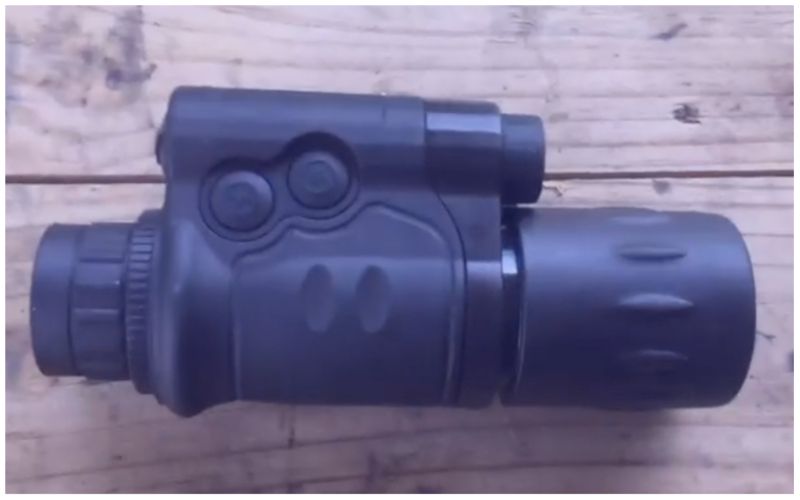
The Gen 1 market is shrinking as digital is taking over the affordable market and Gen 2 becomes cheaper than it once was. Still, brands like NightStar are manufacturing Gen 1 monoculars for the budget-conscious buyer.
Pros:
- Gen 1
- 2x42 configuration
- 150-yard range
- 30 lp/mm resolution
- Green phosphor
Cons:
- Gen 1
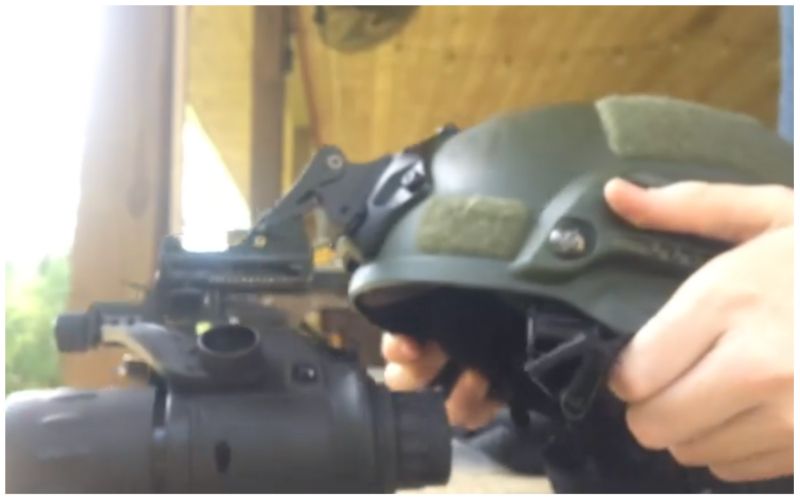
It's still a welcome surprise to me that you can get passive GEN 1 night vision for under $200, and airsofters and squeakers may agree. The NightStar monocular has been around for a long while and it's Gen 1 tube is both its major advantage and drawback.
I like that the old technology affordably gets you into entry-level passive night vision, but it's also outdated in that sometimes the best digital monoculars could outdo Gen 1 performance.
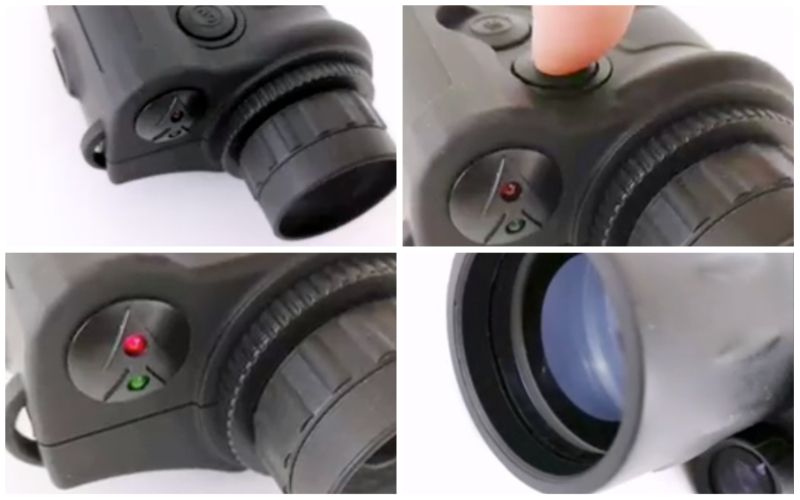
The NightStar has 2x optical magnification, a 42 mm objective lens, 13-degree FOV, and 10mm of eye relief.
It’s a very simple device with green phosphor and 30 lp/mm resolution. Many will be tempted to compare it to Gen 2, but that would be an unreasonable comparison. Even so, the NightStar will perform for up to 150 yards but expect identification inside 100 yards.
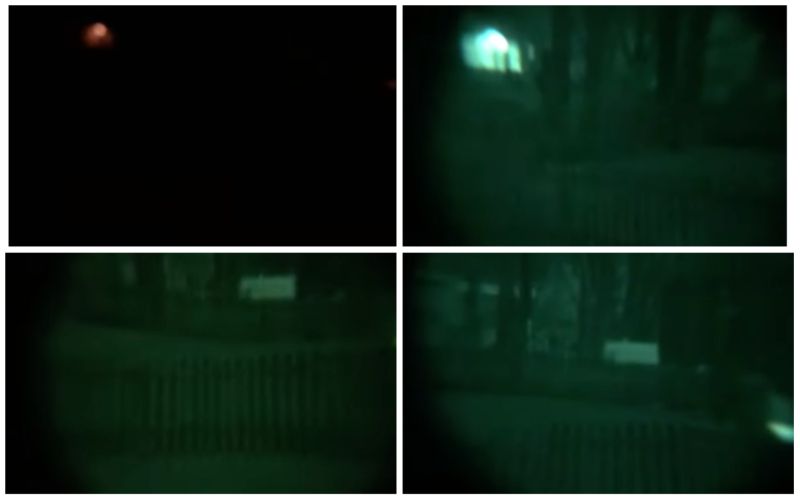
The downsides of Gen 1 is the fish-lens effect and a visible red light from the IR. For ultimate stealth in CQB, turn the IR off - hopefully you can rely on the moon.
Overall, the NightStar performs as a Gen 1 device and doesn’t pretend to be otherwise. For the money, it’s one of the best night vision monoculars you can find that isn’t digital. Though easy to use and effective for close-range, I recommend it for casual observation or airsoft (think MilSims) rather than real military use.
What to Look for in a Night Vision Monocular

The best night vision monocular will mean something different to everyone since budget, size, or technology type preferences will vary.
So, I'll keep it simple with a list of the most important features and specs to be aware of. Here's what you need to know and how to go about understanding it!
Budget
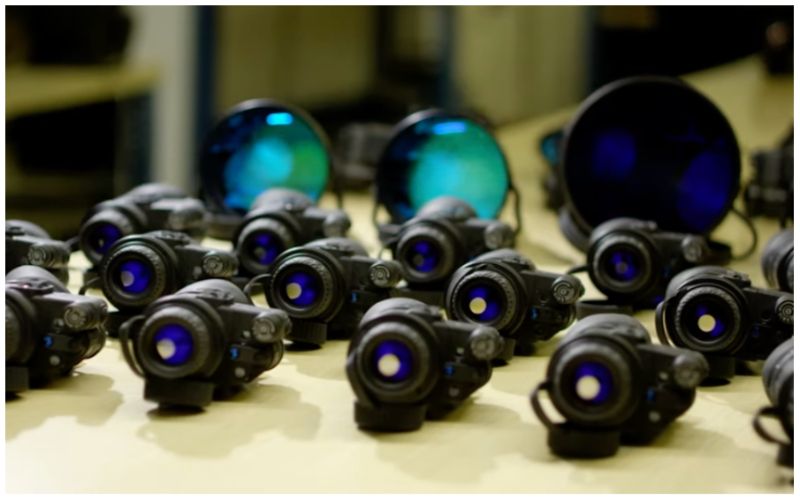
The price range for monoculars with night vision couldn't be more extreme. They can easily start around $100 but can quickly rack up in cost to $5000. In fact, you won't find many decent night vision products under $300 or even under $500.
In general, analog (passive) night vision will cost more than digital night vision. Cost will vary between manufacturers but it largely depends on the technology type used, quality of the IIT, and additional specs like resolution, recording abilities, etc.
Set a budget, stick with it, and shop your options within it.
| Product | Price |
|---|---|
| SiOnyx Aurora Pro | Under $1000 |
| AGM PVS-14 NL1 | Under $2500 |
| Night Owl NOXM50 | Under $200 |
| AGM Wolf-14 NL2 | Under $2000 |
| ATN PVS14-3 | Under $4000 |
| TRYBE PVS-14 | Under $5000 |
| Bushnell Equinox Z2 | Under $350 |
| NightFox Cub | Under $150 |
| Bushnell X650 | Under $200 |
| NightStar Gen 1 | Under $200 |
Quality Glass

Monoculars are still optics whether or not they're equipped with night vision. You still want real glass and lenses with quality coatings to enhance light transmission through the optical system. Always avoid plastic optics - it's a kid's toy at that point.
However, other specs to be aware of include magnification, the aperture (objective lens diameter), the FOV, and the diopter range - all of which are related to glass.
While having magnification is great, the optical power will be lower versus the digital magnification offered in digital monoculars. The higher the digital power, the grainy it becomes.
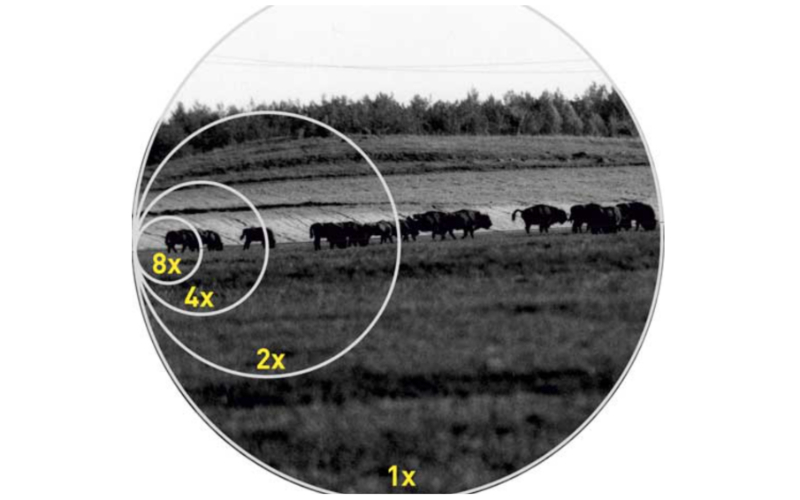
The aperture is the first point of contact light has with the NVM. The larger it is, the more light can enter the tube or CMOS system to be converted to display an image on the screen. Apertures will vary between monoculars and bigger isn't always better. The larger the aperture (longer focal length), the narrower the FOV. The smaller the aperture (shorter focal length), the larger the FOV.
The FOV is usually measured in angular degrees. Most digital monoculars will have somewhere between 4-15-degrees of FOV while passive night vision can offer 40-50-degrees. The smaller the number, the narrower the FOV. The larger the number, the larger the FOV. (Refresh yourself on what is FOV here.)
Lastly, the diopter range is an adjustable eyepiece that allows you to get a sharp view of the screen because everyone's visual acuity is different. It's measured in the same amount of correction as you may see on your glasses prescription. However, some models may not have enough correction.
| Product | Magnification | Objective Lens | Field of View | Diopter Range |
|---|---|---|---|---|
| SiOnyx Aurora Pro | 1-3x | 16 mm | 44° | -4 - +4 |
| AGM PVS-14 NL1 | 1x | 26 mm | 40° | -6 - +5 |
| Night Owl NOXM50 | 5x | 50 mm | 12.5° | -4 - +4 |
| AGM Wolf-14 NL2 | 1x | 27 mm | 40° | -5 - +5 |
| ATN PVS14-3 | 1x | 27 mm | 40° | -5 - +2 |
| TRYBE PVS-14 | 1x | 25.4 mm | 40° | -6 – +2 |
| Bushnell Equinox Z2 | 6x | 50 mm | 4.24° | Unknown |
| NightFox Cub | 3x | 56 mm | 10° | Unknown |
| Bushnell X650 | 5x | 32 mm | 7.29° | Unknown |
| NightStar Gen 1 | 2x | 42 mm | 13° | -4 - +4 |
Detection Ranges
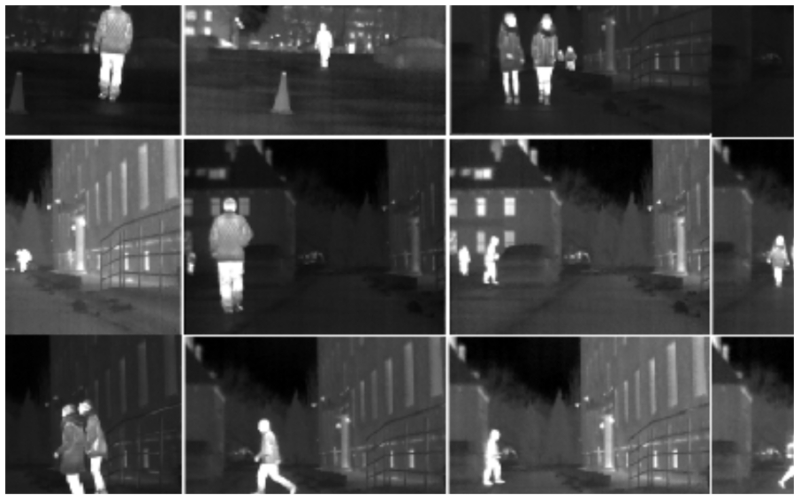
Detection range will always vary depending on the conditions, ambient light, IR illuminator use/non-use, and sensor or tube performance. 100-300 yards is easily achievable by higher end optics. On the other hand, 30-150 yards is typical for entry-level monoculars.
Though I know most manufacturers don't like to state given detection ranges, the following measurements are estimates but should be pretty close as to what to expect. It's always better to be surprised about over-performance than to be let down by underperformance.
| Product | Detection Range (Approx.) |
|---|---|
| SiOnyx Aurora Pro | 150 yards |
| AGM PVS-14 NL1 | 350 yards |
| Night Owl NOXM50 | 150 yards |
| AGM Wolf-14 NL2 | 150 yards |
| ATN PVS14-3 | 350 yards |
| TRYBE PVS-14 | 350 yards |
| Bushnell Equinox Z2 | 333 yards |
| NightFox Cub | 165 yards |
| Bushnell X650 | 200 yards |
| NightStar Gen 1 | 150 yards |
IR Illuminators
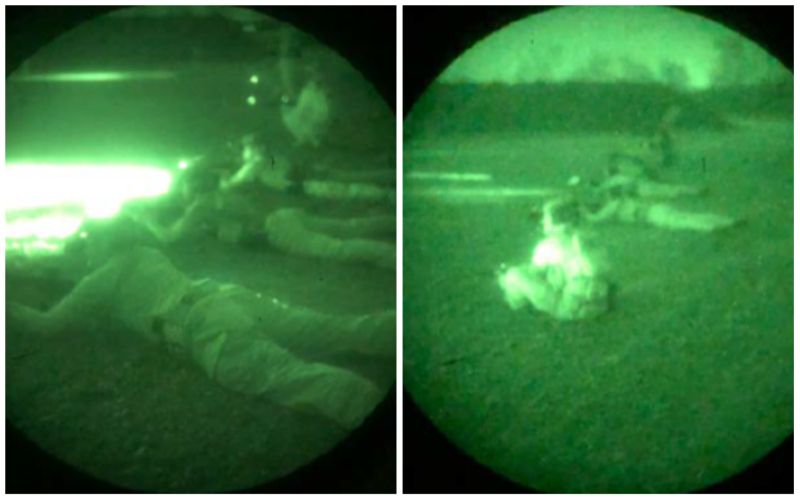
Adding an artificial light source can significantly improve your detection range. However, there are some downsides that include washout of the sight picture and being detected by other night vision users.
For many budget monoculars, the highly visible red light may be a drawback - but it's the way of night vision.
Most night vision monoculars will come with built-in IR illuminators while some higher-end ones will allow intensity control and even on/off switches.
| Product | IR Illuminator | IR Illuminator Type |
|---|---|---|
| SiOnyx Aurora Pro | No | N/A |
| AGM PVS-14 NL1 | Yes | Built-in |
| Night Owl NOXM50 | Yes | Built-in |
| AGM Wolf-14 NL2 | Yes | Built-in |
| ATN PVS14-3 | Yes | Built-in |
| TRYBE PVS-14 | Yes | Built-in |
| Bushnell Equinox Z2 | Yes | Built-in |
| NightFox Cub | Yes | Built-in |
| Bushnell X650 | Yes | Built-in |
| NightStar Gen 1 | Yes | Built-in |
Analog VS Digital Night Vision
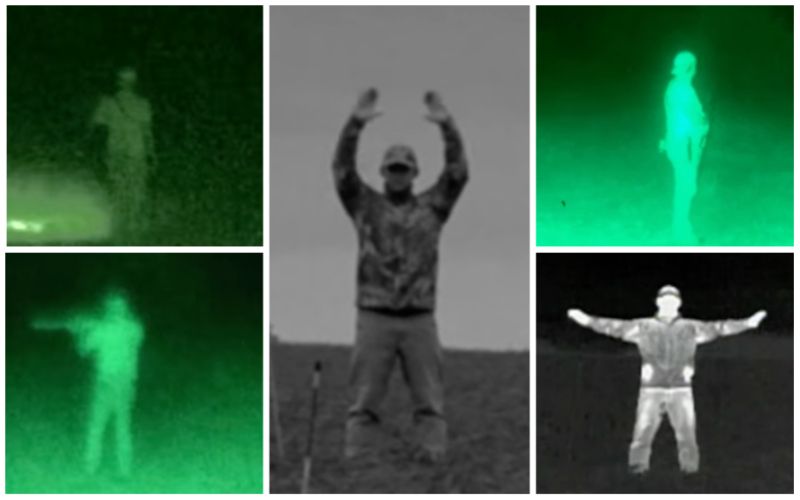
Gen 1 is the cheapest type of analog (passive) night vision available and increases in quality and performance with Gen 2 and Gen 3. Though there are many NVDs that are designated as Gen 4, it technically just means that they have unfilmed tubes.
Passive night vision incorporates multiple components from a photocathode to a phosphor screen housed inside an image intensifier tube (IIT). Inside this tube, light is amplified. Get a complete explanation on night vision generations here.
Digital night vision is completely digital. They use a computer chip and sensor to electronically display an image. Digital monoculars may have additional features including WiFi/Bluetooth connectivity, image capture or video recording, and are cheaper than passive NVMs.
However, digital devices may not be able to compete when it comes to resolution quality, battery runtime, FOV, and detection range.
| Product | Night Vision Type | Generation |
|---|---|---|
| SiOnyx Aurora Pro | Digital | N/A |
| AGM PVS-14 NL1 | Passive | Gen 2 |
| Night Owl NOXM50 | Passive | Gen 1 |
| AGM Wolf-14 NL2 | Passive | Gen 2 |
| ATN PVS14-3 | Passive | Gen 3 |
| TRYBE PVS-14 | Passive | Gen 4 |
| Bushnell Equinox Z2 | Digital | N/A |
| NightFox Cub | Digital | N/A |
| Bushnell X650 | Digital | N/A |
| NightStar Gen 1 | Passive | Gen 1 |
Resolution, SNR & FOM
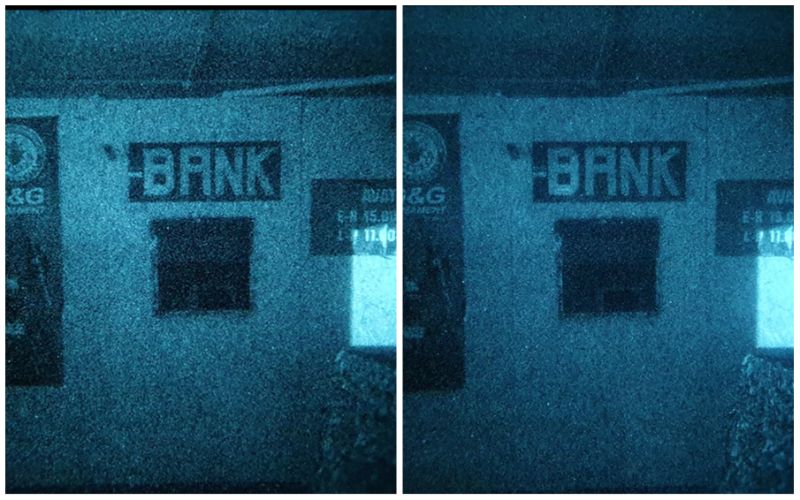
The best night vision monoculars have analog night vision with resolution anywhere between 64-81 lp/mm. Gen 1 ranges in the 25-36 lp/mm while Gen 2 offers 45-64 lp/mm. These figures are a general guideline and not always the rule.
Resolution is one of the first indicators of night vision performance that also determines cost and quality. Digital monoculars have different resolution standards. There's sensor resolution and then display resolution. If it has video recording, that may be different too.
SNR is the Signal-to-Noise Ratrio. It's very important as it indicates how sensitive a photocathode is in an IIT. It will make a difference to the eye as lower SNRs tend to have a grainier (noisier) image. The best NVDs have a 25-30+ SNR value.
FOM is the Figure of Merit. This value is calculated my multiplying SNR by the resolution. FMR = SNR X Resolution. It gives a general idea of overall IIT performance, and like SNR, determines house much noise is in the sight picture.
With all that said, only passive night vision have SNR and FOM values as they have tubes, whereas digital devices don't. SNR and FOM values also vary from model to model. Sometimes you might not know what you'll get until it's in hand. Hand-select models may help with guaranteeing a high-grade NVM.
| Product | Resolution |
|---|---|
| SiOnyx Aurora Pro | 1024 x 768 |
| AGM PVS-14 NL1 | 51-64 lp/mm |
| Night Owl NOXM50 | 35 lp/mm |
| AGM Wolf-14 NL2 | 45-57 lp/mm |
| ATN PVS14-3 | 64-72 lp/mm |
| TRYBE PVS-14 | 64-81 lp/mm |
| Bushnell Equinox Z2 | 1080p |
| NightFox Cub | 640 x 480 |
| Bushnell X650 | 640 x 480 |
| NightStar Gen 1 | 30 lp/mm |
Battery Life

You'll want to pay attention to what batteries your monocular will require. Having to purchase multiple batteries can get expensive, especially if the battery life span is only a few hours.
Digital monoculars have battery life ranging from 1-10 hours from one to multiple batteries. These can be heavy to wear while helmet mounted or may require counterweights.
Passive night vision monoculars can offer 20-60 hours or more on a single battery. Some have the ability to use either a AA or CR123 battery and come with an adapter to ensure a secure fit.
Both types of night vision monoculars can be compatible with battery packs to extend the battery runtime.
| Product | Battery Type | Battery Life (Approx.) |
|---|---|---|
| SiOnyx Aurora Pro | 2x NP-50 1100mAh li-on | 2 hours |
| AGM PVS-14 NL1 | 1x AA | 50 hours |
| Night Owl NOXM50 | 1x CR123 | 45-100 hours |
| AGM Wolf-14 NL2 | 1x CR123A or AA | 40 hours |
| ATN PVS14-3 | 1x AA | 50 hours |
| TRYBE PVS-14 | 1x AA | 50 hours |
| Bushnell Equinox Z2 | 4x AA | 2 hours |
| NightFox Cub | 1x 18650 | 9 hours (day) 4 hours (night) |
| Bushnell X650 | 4x AA | 2 hours |
| NightStar Gen 1 | 1x CR123 A | 30 hours |
Weight/Size
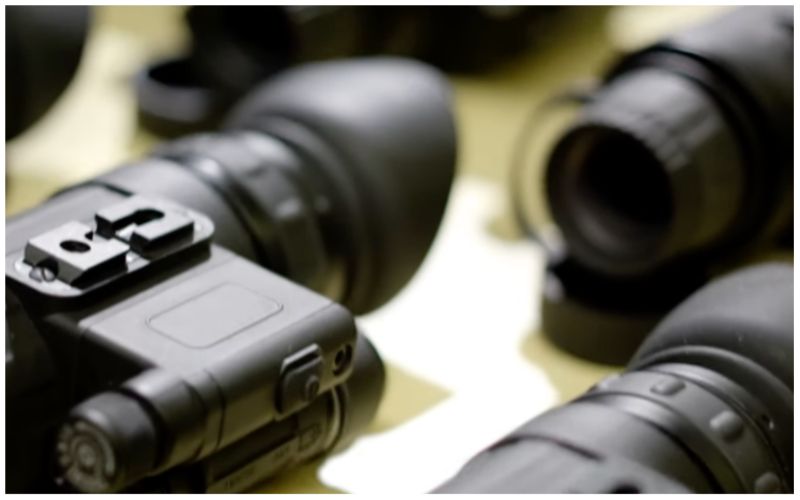
Monoculars are meant to be compact and lightweight. When mounted to a helmet or weapon, they should be light enough to comfortably bear and small enough to not inhibit safe and correct use of other gear.
Heavy monoculars are in and around 1-2 lb. and are around 6 x 3 x 3" on the larger side. The most compact monoculars are under 1 lb. and in the 4 x 2.5 x 2.5" range.
| Product | Dimensions | Weight |
|---|---|---|
| SiOnyx Aurora Pro | 4.7 x 2.1 x 2.5 inches | 0.5 lbs |
| AGM PVS-14 NL1 | 4.5 x 2.5 x 2.7 inches | 0.8 lbs |
| Night Owl NOXM50 | 7.45 x 2.5 x 4.25 inches | 0.87 lbs |
| AGM Wolf-14 NL2 | 6.1 x 2.3 x 2.9 inches | 1.0 lbs |
| ATN PVS14-3 | 4.5 x 2 x 2.25 inches | 0.8 lbs |
| TRYBE PVS-14 | 4.5 x 2.5 x 2.75 inches | 0.8 lbs |
| Bushnell Equinox Z2 | 2.4 x 4.1 x 8.1 inches | 1.68 lbs |
| NightFox Cub | 5 x 1.8 x 2.9 inches | 0.5 lbs |
| Bushnell X650 | 2.7 x 3.3 x 7.4 inches | 0.7 lbs |
| NightStar Gen 1 | 7.1 x 4.6 x 2.1 inches | 2.0 lbs |
Warranty

Stick with a brand you know and trust. If you're new to optics, look for a brand that has a proven track record. Great customer service, product warranties, and brand reputation are key features to look for.
Make sure your night vision monoculars come with a warranty. You should note that night vision warranties aren't very long. They can be anywhere from 1-5 years. They're typically only valid to the original purchaser with proof of purchase, requires registration, and it starts from the date of purchase.
| Product | Warranty |
|---|---|
| SiOnyx Aurora Pro | 1-year Limited Return/Exchange Warranty |
| AGM PVS-14 NL1 | 3-year Limited Warranty |
| Night Owl NOXM50 | 1-year Limited Warranty |
| AGM Wolf-14 NL2 | 3-year Limited Warranty |
| ATN PVS14-3 | 2-year Product Return Warranty |
| TRYBE PVS-14 | 2-year Standard Limited Warranty |
| Bushnell Equinox Z2 | 5-year Ironclad Warranty |
| NightFox Cub | 18-month Warranty |
| Bushnell X650 | 5-year Ironclad Warranty |
| NightStar Gen 1 | 2-year Limited Warranty |
FAQ’s
SiOnyx Aurora Pro - Best Digital
AGM PVS-14 NL1 - Best Budget PVS-14 Under $2500
NightOwl NOXM50 - Best GEN 1
AGM Wolf-14 NL2 - Best GEN 2
ATN PVS14-3 - Best GEN 3
TRYBE PVS-14 - Best GEN 4 & Best White Phosphor
Bushnell Equinox Z2 - Best Magnified Monocular
NightFox Cub - Best Under $150 & Best Budget
Bushnell X650 - Best Under $200
NightStar 2x42 - Best for Airsoft
As a general rule, night vision monoculars are designed for handheld use. There are exceptions like the PVS-14 that can be weapon-mounted. Recoil resistance must be considered, and it must be used with an aiming sight as monoculars typically lack a reticle.
The best magnification for a monocular is one that fits the need. For night vision, 1x offers versatility as it may be mounted for hands-free operation and improved mobility. High power offers magnified images, especially useful when tripod-mounted, but sacrifices FOV.
On average, you can see up to 100 yards with basic night vision monoculars. In this case, seeing is synonymous with target identification. Detection range is further, but both identification and detection ability is dependent on quality, ambient light conditions, and IR illuminator use.
The Monocular: King of Versatility
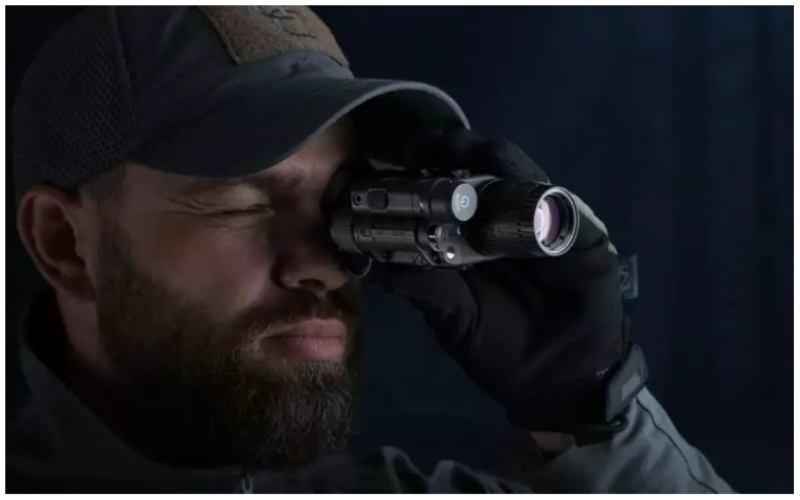
The night vision monocular reigns over all other night vision devices in the market. They are the most versatile NV device to get you seeing at night in multiple applications.
But just like night vision scopes and goggles, they vary in quality, performance, and price. Choosing the right one takes knowing a bit about them to sift out the good ones from the bad ones.
Whether it's camping, hiking, hunting, wildlife observation, scouting, search and rescue, home defense, law enforcement, SHTF, surveillance - you name it, the monocular will light up your world.
Further Reading



